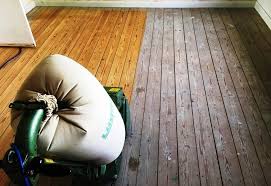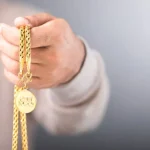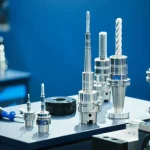A floor sanding process on your timber is one of the most crucial wood floor sanding procedures to take in order to make your floor beautiful and pristine. Although it might sounds good idea to save some money by DIY sanding there is, in most cases, a big chance to make it a time and financial consuming error. As simple as it sounds, even correct sandpaper grit and flawless finish can destroy the floors which is why sometimes even minor failures can result in irreversible losses. This blog discusses the most frequent mistakes of homeowners that result in sanding their floors in a wrong manner, and why it is a better idea to leave such job to professionals.
Choosing the Wrong Sanding Equipment
Diyer tend to rent simple drum or orbital sanders in their local hardware store, however they can be old, poorly serviced or just not suitable to the floor type. As an illustration, drum sanders are very vigorous and can make deep grooves unless controlled immaculately. Orbital sanders are friendlier, but they are generally too soft to start scraping heavy finishes or deep scratches. When you do not have advanced controlled (dust control) industrial strength equipment, the sanding process is slower, dirtier, and more dangerous. Most add-ons to the commercial-grade sanders dust extraction system, variable settings and specially designed edges and corners. They are accurate and safe and avoid exposures to air dust at home and unfinished sanding.
Failing to Prepare the Room Properly
Prepping of the room is one of the most under-emphasized demeanors of sanding. Most people start to sand without adequately clearing furnitures, rugs, or even popping nails on something. Any scrap metal or scrap found on the floor may hurt the sanding machine or hurt the person. Dust should not be allowed to settle in the floor vents and the wall trims, or baseboards as well; the sanding should not cause any abrasions. To contain the dust, professionals largely spend some time masking off of nearby rooms, removing obstacles, and sealing entryways. The whole room that you live in can get covered with fine wood dust or the product that you have at the end of the day may be spoiled when dust occurs on fresh sanded areas.
Sanding Unevenly and Creating Surface Marks
It is essential to consider consistent pressure to be applied on the entire area of the floor to provide a smoothing effect of the sander. It is also unfortunate how many DIYers sand too much at once or hold down in one spot too long, creating notches, furrows, and other traces of sanding, as in swirl marks. These flaws will be more evident following stain or sealing and correcting them could most often mean resanding the whole flooring. Patchy coloration and a bumpy feel on foot of stains of finishes owing to uneven sanding is another disadvantage of this method of smoothing out surface textures. A certified sanding technician is familiar with the proper behavior of the machine and regulating the force of pressing and reaching smooth results using several sanding with different grind alternation.
Misjudging the Depth of Sanding for Engineered Floors
The veneer of engineered wood flooring is hard, and very thin (usually 2-4 mm), so after a few cycles of sanding it can simply be ground away. Unknowingly, most DIYers end up going too deep during sanding and not only do they get rid of the top coating but also reveal the plywood or fiberboard on the other side. This totally damages the look and usage of the flooring which mostly would need all replacement. This is an experience of knowing the thickness of veneer and determining whether a floor could be sanded or not. That is why choosing professional floor sanding service may save the day- it can measure the thickness of the floors correctly and can sand smoothly but effectively without losing the support of the floor.
Using the Wrong Sandpaper Sequence
To save time, DIYers are in a habit of skipping grit sequences and using a coarse sandpaper followed by fine grit. This short cut hinders total elimination of scratches deposited by the rougher pass resulting in poor surface preparation, and ugly finish later on. All the sanding process is progressively done but one step depends on the other- i.e., first with the rough sandpaper to remove the old finishes, then the medium sandpaper followed by the fine sandpaper to smooth the surface accordingly. When not transitioning properly, the finish may leave deep scratches in place with a crude jagged look to the transition. Professional sanders use a time-tested sequence of grit sizes that fit the current condition of your floor as well as the desired finish.
Ignoring Floor Repairs and Subfloor Issues
Sanding is not a self-contained activity; it is merely a component of a bigger repair job starting with the check of the floorboards and floor. Loose boards, squeaky panels, sticking out nails or gap between planks are easy to overlook by DIYers. Failure to address such issues leads to wobbly surfaces that worsen the sanding process and decrease adhesion even to the finish. On some floors only one or two boards at a time may be required to be replaced or re-nailed, on others the filling of gaps must be done with resin, or with slivers. Every sanding exercise is started with thorough inspection and repair plan that guarantees the surface is safe, smooth and able to accommodate smooth finishing.
Applying Finish Incorrectly or Too Late
The thing is to do it after sanding. When a floor that has been freshly sanded is left to dry out excessively it may absorb moisture or become contaminated on the surface or may expand in consequence of the humidity. DIYers have no idea what kind of finish to use on their floor, (lacquer, oil or hardwax), or how long the finish ought to be left to cure. Not evenly applied may result in the appearance of streaks or cloudy areas as well as tackiness. Finishes are applied as soon as sanding is undertaken by professionals who utilize best products dependant on the nature of wood and the room they are to be used in. Their method maintains an easy application, decent curing manner and a long-term protection to improve the looks and durability of the floo.r.
Underestimating the Physical Effort and Time Required
A lot of home owners do not realize the physical exertion and time that is involved in sanding the floor. Spending hours under heavy construction machinery and tools, crouching over at the edges, and dodging around manifestations of architecture is tiresome, not to mention days on days. It may also cause injury through mistakes, hurry or skipping of sanding due to fatigue without technique and pacing. Technicians come with a team, fully equipped, and most of the jobs within a tight schedule. They use up days (or even weeks) of a homeowner without producing a better result, and they take the least amount of intrusion to everyday life.
Conclusion
DIY sanding of wood floors may seem a good idea and project, however the chances of making the mistake, which are far-reaching and not to mention expensive, is more than employing a professional and doing without and paying the professional to begin with. Ranging in severity level as far as going all the to using the wrong equipment and even to under or over estimating the sanding depth or even to using the wrong type of finish, the mistakes can affect the appearance and the performance of your floors permanently. In case you care about the value and beauty of your place stay at home and the best and surest way is to make referrals to professionals who can present you with a solution since they are aware of the complexity of each type of wood and floor design. Also, to make sure that the end result is a well sanded floor and there is nothing to regret, you should prefer a professional floor sanding service at the beginning of things.







